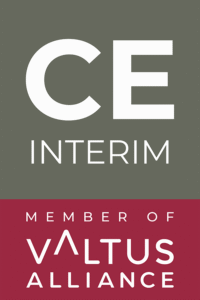¿No tiene tiempo para leer el artículo completo? Escuche el resumen en 2 minutos.
💬 "Wau... no he podido encontrar ni un solo error o punto débil... nada que rebatir".
Eso es lo que dijo el cliente tras una entrevista con uno de nuestros gestores interinos.
¿Cómo se llega a ese nivel?
¿Cómo se afronta una entrevista de 30 minutos con un cliente, se acude con un vago resumen del proyecto y, aun así, se convierte en la persona de la que hablan después?
Seamos claros: en una entrevista intermedia no se trata de exhibir el currículum ni de enumerar los 20 años de carrera profesional más destacados.
👉 Se trata de una cosa:
¿Pueden imaginarte interviniendo y arreglando rápidamente lo que no funciona?
Tanto si está tratando de conseguir su primer puesto interino como de perfeccionar su presentación para puestos transfronterizos, dominar este momento es importante.
Vamos a desglosarlo juntos.
🎯 Paso 1: Entender qué quiere realmente el cliente
La mayoría de las descripciones de las asignaciones provisionales son deliberadamente vagas:
"Estabilizar el rendimiento de la planta".
"Apoyar el cambio cultural".
"Mejorar la rentabilidad".
Pero detrás de cada uno de esos titulares hay una historia y, por lo general, algún nivel de dolor operativo.
Y ésta es la verdad: si dos candidatos están igualmente cualificados sobre el papel, el cliente elegirá al que demuestre comprensión real de la situación de fondo.
Veamos un ejemplo real.
Se entrevistó a dos directivos interinos para el mismo puesto. Uno habló de sus logros y su estilo de liderazgo. El otro compartió la experiencia pertinente, pero añadió que había trabajado en lugares remotos, había gestionado la resistencia de los empleados y prefería los entornos estructurados y centrados en el trabajo.
Ambos eran capaces. Pero el segundo candidato consiguió el proyecto.
¿Por qué?
Porque el centro en cuestión estaba alejado, era de difícil acceso y se recuperaba de una adquisición perturbadora. Los empleados estaban desmoralizados. El cliente nunca lo dijo abiertamente, pero el segundo candidato se dio cuenta y adaptó su mensaje en consecuencia.
💡 Pregúntate a ti mismo: "Si yo estuviera en su lugar, ¿a quién contrataría para arreglar esto rápido?".
Paso 2: Hable de resultados, no de plazos
Cuando el cliente te pregunte: "Háblame de tu experiencia", evita repasar tu carrera en orden. No es eso lo que están escuchando.
Lo que en realidad quieren es esto: ¿Puedes resolver su problema con rapidez, precisión y el mínimo dramatismo?
Las mejores respuestas se basan en pruebas:
- "Reduje los costes operativos en 30% en seis meses".
- "Rediseñé un diseño roto y llegué a EBITDA cero en menos de un año".
- "Estabilicé un almacén en dificultades en 10 semanas".
Pero, lo que es más importante, relaciona tu ejemplo con su necesidad actual.
Digamos que mencionan ineficiencias en el diseño. Usted podría responder:
"Empezaría por trazar un mapa del flujo de materiales e identificar los cuellos de botella. Luego, en colaboración con el equipo in situ, rediseñaría la distribución utilizando lo que ya está disponible, para reducir el tiempo de inactividad y, al mismo tiempo, mantener el progreso rápido y visible."
Es específico. Es práctico. Demuestra que ya lo has hecho antes y que sabes cómo volver a hacerlo.
Eso es lo que destaca en un proyecto provisional entrevista.
🧠 Paso 3: Escucha la pregunta que hay detrás de la pregunta
No todas las preguntas son lo que parecen. Por ejemplo:
"¿Cuál es su planteamiento cuando alguien del equipo no rinde?".
Puede parecer una pregunta básica de gestión. Pero lo que realmente están preguntando es:
"¿Actuarás cuando sea necesario, o esperarás a que sea demasiado tarde?".
Tu respuesta les dará una idea de cómo lideras bajo presión y de cómo te adaptas a su situación.
No hay un guión perfecto. Lo mejor es hacer preguntas agudas antes de dando respuestas pulidas:
- "¿Cuáles son sus mayores preocupaciones en este momento?"
- "¿Cuál es el plazo previsto para los resultados?".
- "¿Qué se ha probado antes y por qué no ha funcionado?".
De este modo, la entrevista deja de ser un interrogatorio para convertirse en una conversación real. Y cuando tu respuesta se basa en su realidad real, te vuelves instantáneamente más relevante.
💼 Paso 4: Prepárate como si ya estuvieras en el papel
Muchos profesionales interinos se preparan para las entrevistas como si estuvieran solicitando un puesto fijo. Esa es la mentalidad equivocada.
No te contratan para formar parte de un equipo, te traen para resolver algo importante.
Así que prepárese como si ya estuviera dentro de la empresa. Un enfoque que muchos ejecutivos interinos de éxito utilizan:
El flujo de entrevistas que funciona:
1) Empiece con un resumen de posicionamiento de 30 segundos. Que sea directamente relevante para el puesto.
2) Pregunte por el verdadero reto. Muestre curiosidad. Indague sobre la urgencia, los obstáculos y los intentos anteriores.
3) Relacionar los resultados anteriores con su dolor. No se limite a decir lo que ha hecho, explique cómo encaja en su contexto.
4) Invita a la claridad. Pregunte: "¿Hay algo que le impida elegirme para este papel?".
Esto último puede parecer atrevido, pero funciona. Transmite confianza y ayuda a que afloren dudas que puedes resolver de inmediato.
✨ Reflexión final
Puede que nunca abran su CV. Es posible que su correo electrónico solo se lea por encima.
Pero eso ¿una entrevista? Ese es tu momento para cambiar la conversación de "¿Está cualificada esta persona?" a "¿Cómo de rápido podemos empezar?"
Así que preséntese bien.
Haz mejores preguntas.
Liderar con impacto.
Habla como si ya pertenecieras a la mesa.
🎯 Porque en el liderazgo interino, la forma en que te presentas en los primeros 30 minutos a menudo lo decide todo.





